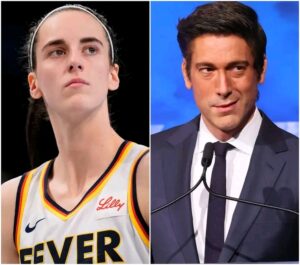
Although the WNBA has always benefited from intensity, the recent outbursts involving Sophie Cunningham, Caitlin Clark, and Angel Reese have elevated that intensity to a level the league can no longer ignore. Although phrases like “brutal attack” were popular on social media, nothing that occurred qualified as an actual assault. Rather, an uncomfortable spotlight has been placed on the league due to a series of harsh fouls, chippy exchanges, and unfiltered emotions.
It wasn’t a single dirty play or guilty player that caused the events of the previous few games. It was about an environment that has been simmering for weeks—an environment where ardent fanbases, self-assured veterans, and up-and-coming stars come together. After a number of intensely scrutinized encounters with both Cunningham and Clark, Reese—whose competitive edge has always been a part of her identity—suddenly found herself at the center of the storm. Although none of those plays resulted in formal disciplinary action, the conversation went into overdrive due to the optics and the internet’s propensity to magnify everything.
Many fans and commentators are quick to point out that Reese is not the problem. It’s not Clark. It’s not Cunningham. It’s their surroundings. Games with prominent rookies or vocal veterans have become emotional arenas. Every push or look turns into a meme. Every foul is presented as either intentional or malicious. The conflict between “old guard vs. new wave” and “physicality vs. marketability” takes precedence over the actual basketball.
Reese’s popularity has always been fueled by her passion, but in this environment, even routine physical play can turn into something darker, particularly when Caitlin Clark is involved. When anything seems even slightly unfair, Clark’s massive fan base responds right away. In the meantime, athletes like Cunningham, who are renowned for their toughness and outspoken leadership, find themselves drawn into stories they had no intention of taking part in. The physicality isn’t the true threat. The distortion is the cause.
Clips that have been edited move between timelines. Exaggerated headlines are common. Long before officials have finished evaluating the play, accusations such as “dirty,” “targeted,” and “attack” began to circulate. All of a sudden, the league is trying to oversee the online fan base in addition to the athletes. Fans have a clear message and are calling for accountability on all fronts:
”Cease this before the game is ruined.”
The WNBA is currently at a critical juncture. Physical conflicts and rivalries are beneficial to business. They have always been. However, the sport loses something significant when the discourse turns toxic and players start acting more like caricatures than competitors. To reduce rather than increase tensions, the league may need to tighten officiating consistency, define what constitutes excessive contact, and communicate more actively. In order to change the tone and maintain the competitive spirit, players may also be extremely important.

In WNBA history, this is the most viewed period. There has never been a brighter spotlight. Stronger emotions, louder discussions, and much bigger stakes follow. However, the issue isn’t with the physical play per se. These are the narratives that have escaped. Additionally, the drama runs the risk of overshadowing the very basketball that is driving the WNBA to new heights if the league doesn’t get a handle on things quickly.




